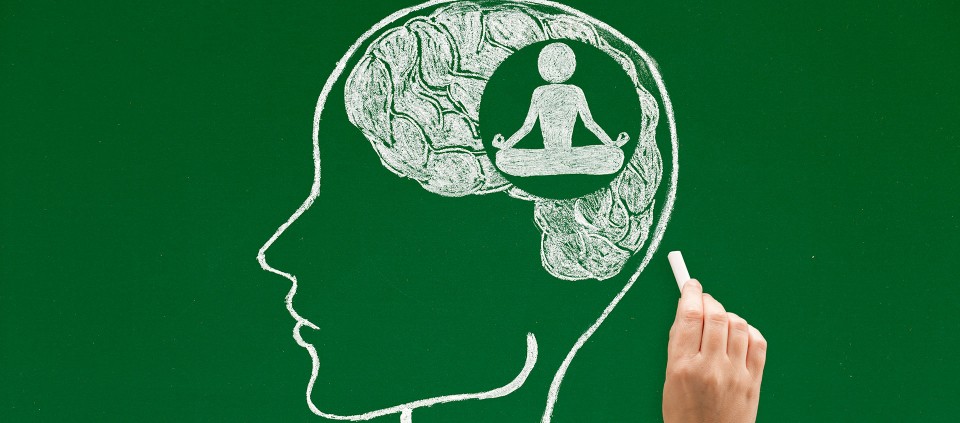How Yoga Supports Brain Health

The body of research on meditation and the brain has been growing over the past 20 years. Studies have explored the various ways in which meditation practice, both short- and long-term, may change the brain in positive ways. However, there has been considerably less attention to the impact of yoga practice on the brain—until recently. Researchers have begun to widen their attention to include not only meditation but also how yoga postures and breathing techniques may change the brain in beneficial ways.
For the most part, studies on yoga and the brain have largely been cross-sectional in design. This means that, in order to understand how a practice might be impacting parts of the brain, researchers gather a group of long-term yoga practitioners, study their brains, and then compare their brains to those of people who have not practiced yoga. Here’s what they’ve learned so far.
Long-term yoga practice may protect the brain against age-related decline.
In 2005, Sara Lazar and her team of researchers completed a groundbreaking study on meditation and cortical thickness (a marker of brain aging), which showed that long-term meditation practitioners had less cortical thinning. But does yoga have the same effect? To answer that question, researchers at Duke University conducted a study similar to Lazar’s, in which they compared long-term yoga practitioners—those who practiced for at least 45 minutes at a time, three to four times a week, for at least three years—and compared them to matched controls. Would yoga, like meditation, offer protective effects on the aging brain?
The researchers found that, in fact, it did. The yogis showed greater gray matter volume in a number of different parts of the brain, including parts of the prefrontal cortex and the limbic system—areas related to stress and emotion regulation. Yoga seemed to protect the brain from the normal wear and tear of getting older.
Yoga may protect parts of the brain related to stress.
Other studies looking at long-term yoga practitioners have found that specific parts of the brain seem to be especially protected from stress, possibly due to yoga. Specifically, a couple of studies have shown that yoga may buffer against atrophy in the hippocampus—a part of the brain related to memory, emotion-regulation, and information processing. A small structure housed in the limbic system (the emotion center of the brain), the hippocampus is essential to our overall mood and experience of the world. People with major depression and PTSD, for example, have smaller hippocampi volume than people without these conditions. Scientists believe that this part of the brain can be negatively impacted by stress—stress shrinks it—and hypothesize that those with smaller hippocampal volume may be at increased risk of developing PTSD. (Some antidepressants, as well as exercise, have also been shown to increase hippocampal volume.)
In addition, a study found that long-term yoga practitioners also benefited from decreased cortical thinning in parts of the prefrontal cortex (PFC), an area of the brain related to emotional control, decision making, and impulse control. This study looked at the number of “cognitive failures” (as measured through subjective questionnaires) and gray matter volume in the PFC. People who had more grey matter volume in the PFC reported fewer cognitive failures, and the yoga group showed more gray matter volume in the PFC than the control group. The implication? Yoga may protect gray matter volume from declining in these particular regions of the brain—regions associated with cognitive control—and this reduces the number of cognitive failures that yoga practitioners experience compared with controls.
Many questions still remain about yoga and the brain.
While these studies are promising—partly because researchers were able to replicate them more than once—they are still preliminary. All the studies to date have had small sample sizes (no more than 14 people per group). In addition, because the studies were cross-sectional, there’s no way to know for sure that it was the yoga that created these changes. Perhaps it goes the other way: People with larger gray matter volume in these areas of the brain might be more inclined to practice yoga. Or perhaps it wasn’t the yoga that created the difference between groups, but another, unmeasured factor—such as other types of exercise.
However, if these benefits are an outcome of yoga practice, could they translate to clinical populations? For example, if people with PTSD who had smaller hippocampal volume practiced yoga, could they change their symptoms? Or could yoga be used as a buffer against diseases that are impacted by cortical thinning, such as dementia? These are ongoing questions for researchers to tackle as they continue to explore how yoga may positively impact the brain.
Angela Wilson coteaches The Science of Yoga at Kripalu.
© Kripalu Center for Yoga & Health. All rights reserved. To request permission to reprint, please email editor@kripalu.org.
Angela Wilson, LMHC, RYT 500, is a Kripalu faculty member who has conducted research and written about the intersection between yoga, Western psychology, and science.
Full Bio and Programs